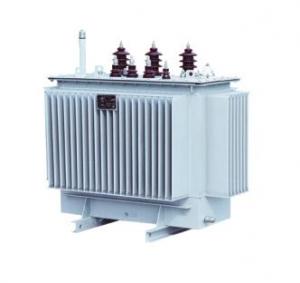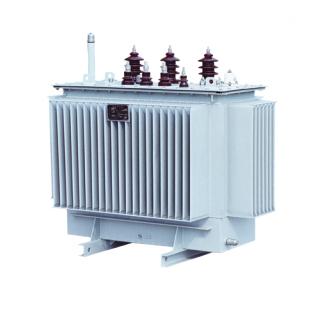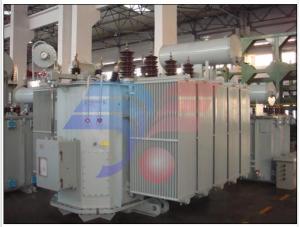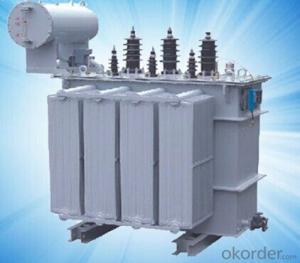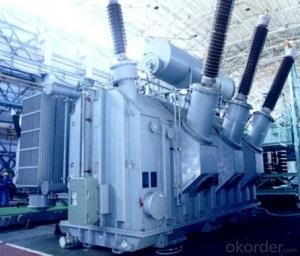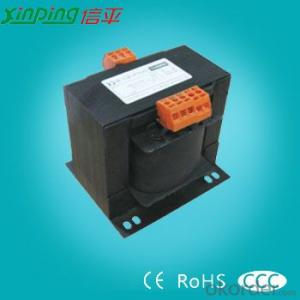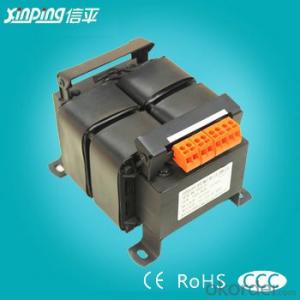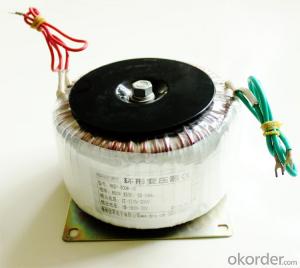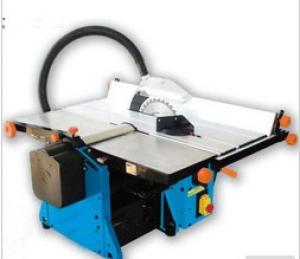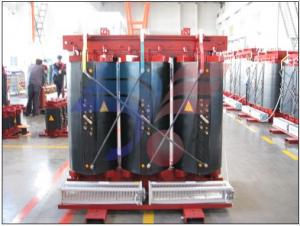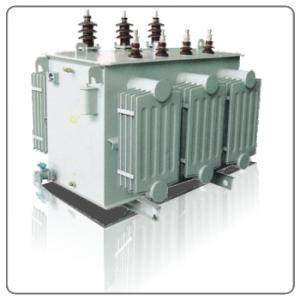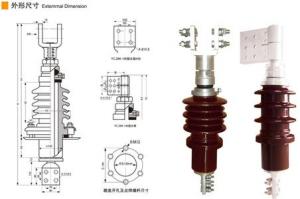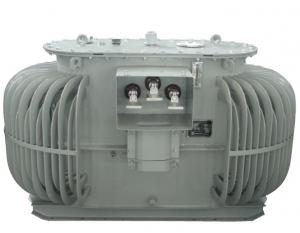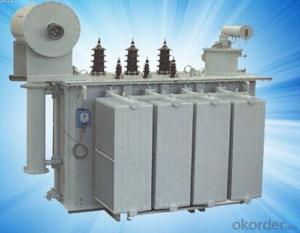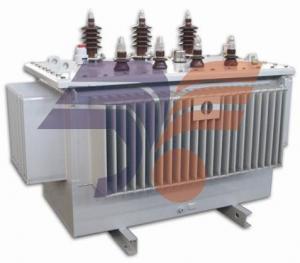ZGS-200-1000-10 Combined transformer
- Loading Port:
- Shanghai
- Payment Terms:
- TT OR LC
- Min Order Qty:
- -
- Supply Capability:
- 1000sets set/month
OKorder Service Pledge
OKorder Financial Service
You Might Also Like
Production introduction
1.ZGS 11 combined transformer is one of the hightech products developed by our company on the basis of pad-mounted transformer.
2.Range of capacity:200-1000KVA.The product is suitable for the neutral-point insulation system or small-resistance grounding system in a 10KV distribution network,or neurtal-point solid grounding system of a three-phase four-wire system in a 400V distribution network.
3.Excellent design,reliable distribution,compact structure,light in weight,and low noise,ect;it has two types of cable outlets;ring net type and terminal type.
4.The product can be placed directly into the load center of 10KV network,thus the line loss is reduced and power distribution reliability is increased.
Performance characteristics
1.The ZGS11 combined transformer consists of high-voltage and low-voltage chambers and transformer tank in the operation chambers.
2.H.V.incoming lines in 10KV cross-linked cables are connected to load switch through knuckle connectors,straight plugs and sleeve sockets.
3.On the high-voltage side,a protection of double fuses(backup current-limiting fuse and plug-in type of fuse are used).
4.There are terminal type and ring net type high-voltage load switches for selection.
They are easy to connect,convert and reliable for power supply.
5.In the low-voltage chamber,a fixed type or drawable type is optional for the low-voltage switch cabinet according to user's requirement.Various low-voltage apparatus,such as metering and protection instruments are available.(Note:In general they are customized)
6.The oil tank is fully-sealed by corrugated radiators,which features compact and superior appearance.
Model designation
Applicable standards
GB1094.1-2-1996 Power Transformer
GB1094.3-5-2003 Power Transformer
JB/T10318-2002 Technical parameters and requirements for oil-immersed,non-crystal alloy iron core,distribution transformer.
Normal service conditions
Installation type:indoor/outdoor type
Ambient temperature:-25oC~+40oC
Altitude:≤1000m
Humidity:daily average value≤95%,monthly average value≤90%
Installation site:in places without corrosive gases,obvious dusts and water-vapour;the gradient is no more than 3% and no fierce shock.
Performance Characteristics
1.Compare with type "9" transformer,the product's no-load loss is reduced by 30% and thus the average annual operating costs can by reduced by 20.03%.
2.The transformer body,high voltage load switch fuses and no-excitation tapping switches are all put into the fully-sealed oil tank,which make good use of the space.Therefore,the overall size of the product is only 1/3 of that of the similar product.
3.The plug-in and out cable connection is easy for operation.
4.An obstacle protection is of two-stage fuses structure(backup current-limiting fuse and plug-in type fuse) which ensures a safe and flexible operation and more convenient for replacing of fuse.
5.The oil tank is fully-sealed,in which the oil is totally isolated from the outside.No leakage and maintenance free.
6.Excellent short-circuit proof capacity and high reliability.
Notes for placing orders
Transformer type:rated capacity kVA
Number of phases:three-phase single-phase
High voltage:kv/Low voltage:kv
Frequency:50HZ 60HZ
Tapping range:±2×2.5%±5%other
Connection group:Yyn0 Dyn11 other
Impedance voltage:4% 6% other
- Q: According to your measurements when we have a step-up or a step-down transformer?
- A transformer is a device that transfers electrical energy from one circuit to another through inductively coupled conductors—the transformer's coils. A varying current in the first or primary winding creates a varying magnetic flux in the transformer's core and thus a varying magnetic field through the secondary winding. This varying magnetic field induces a varying electromotive force (EMF) or voltage in the secondary winding. This effect is called mutual induction. If a load is connected to the secondary, an electric current will flow in the secondary winding and electrical energy will be transferred from the primary circuit through the transformer to the load. In an ideal transformer, the induced voltage in the secondary winding (Vs) is in proportion to the primary voltage (Vp), and is given by the ratio of the number of turns in the secondary (Ns) to the number of turns in the primary (Np) as follows:- Ns/Np Vs/Vp ---------------------(i) By appropriate selection of the ratio of turns, a transformer thus allows an alternating current (AC) voltage to be stepped up by making Ns greater than Np, or stepped down by making Ns less than Np.
- Q: Transformers have any way of cooling
- Transformers commonly used cooling methods are the following: ??1, oil immersion (ONAN); ??2, oil-immersed air-cooled (ONAF); ??3, forced oil circulation air cooling (OFAF); ??4, forced oil circulating water cooling (OFWF); ??5, forced to guide the oil circulation air cooling (ODAF); ??6, forced to guide the oil circulating water-cooled ODWF).
- Q: Actually both amplifies the input voltage. A step up transformer amplifies the input voltage and a transistor also amplifies. So what is the differece????
- A okorder
- Q: I need to find a transformer that will convert 480 input to 240 output for a motor controller. Where can I get this type of transformer? I've only been able to find 120/240 transformers.Thanks.
- Check with a supplier who sells industrial/commercial transformers and other electrical equipment. There should be one in your local yellow pages, or online. You will need to know what kVA rating is required for your motor as well.
- Q: 800kw motor how much transformer
- 800kw motor can generally choose 0.8 motor power in about 800KW with 1000KVA. Motor power in 1400KW or so with 1750KVA. If you are equipped with reactive power compensation (in general, the power company also requires you to match, if the power factor is less than 0.9 Is to be fine) Transformer can also choose a little smaller, like 1000KVA transformer power factor of 0.9 when you can take 900KW load. Can also be based on
- Q: The main transformer is chosen in principle
- Transformer selection, you can refer to the following, but still according to the actual production needs! 1, the number of transformers to determine ???(1), the number of main transformer to determine the principle is to ensure the reliability of power supply. When one of the following conditions is met, two or more transformers shall be installed. ???①, there are a lot of first-class load and although the secondary load but need to set from the security (such as fire, etc.). ???②, when the seasonal load changes greatly. ???③, when the load is large. ???For large-scale hub substation, according to the specific circumstances of the project can be installed 2 to 4 main transformer. ???When installing multiple transformers, it is appropriate to group the transformer according to the characteristics and changes of the load in order to flexibly switch the corresponding transformer group. Transformers should be operated in the sorted manner. Transformer low-voltage outlet of the neutral and neutral ground wire should be laid separately. For the convenience of testing, in the ground circuit, close to the transformer to do a removable connection device. ???(2), the general three-level load or capacity is not too much power and lighting should be a load with only one transformer. ???(3), when any of the following circumstances, can be dedicated transformer ???①, when the lighting load is large or power and lighting using a common transformer seriously affect the lighting quality and lamp life, can be set for lighting special transformer. ???②, single single-phase load is large, should be set single-phase transformer. ???③, the impact of a larger load, seriously affect the power quality, can be set for shock load special transformer. ???④, when the seasonal load (such as air conditioning equipment, etc.) about the total load of the project 1/3 and above, it is appropriate to configure a dedicated transformer.
- Q: How to make a current transformer more linear? Except change the core.Thank you!
- Ideal linearity is reached when B and H are linear. Use air as medium. It may give less output but linearity will be perfect!
- Q: Transformer and the middle of what is the difference
- In the week is the IF transformer or inductance coil, is a fixed resonant circuit with a transformer, the resonant circuit can be fine-tuning within a certain range, so that access to the circuit can achieve a stable resonant frequency.
- Q: even though the output voltage of a transformer can be much larger than the input voltage, the power output is nearly the same as the power input.Determine the relationship between the input and output current and the number of turns in the input and output coils.help!!!!!!!!thank you
- The transformer winding (primary or secondary) with the greatest number of turns has the least current. (The current in the secondary winding) [( the number of turns in the primary winding) / (the number of turns in the secondary winding)] x ( the current in the primary). Of course the primary current in any particular ideal transformer is determined by the load on that transformer. If there is no load then both primary and secondary currents are equal to zero.
- Q: do you think transformers is cool or not and why?
- Yes, Well at least the graphics, special effects, action, and the cool tight cars were awesome but they could have made it a bit better by showing more of the new robots that came in the movie.
Send your message to us
ZGS-200-1000-10 Combined transformer
- Loading Port:
- Shanghai
- Payment Terms:
- TT OR LC
- Min Order Qty:
- -
- Supply Capability:
- 1000sets set/month
OKorder Service Pledge
OKorder Financial Service
Similar products
Hot products
Hot Searches
Related keywords
